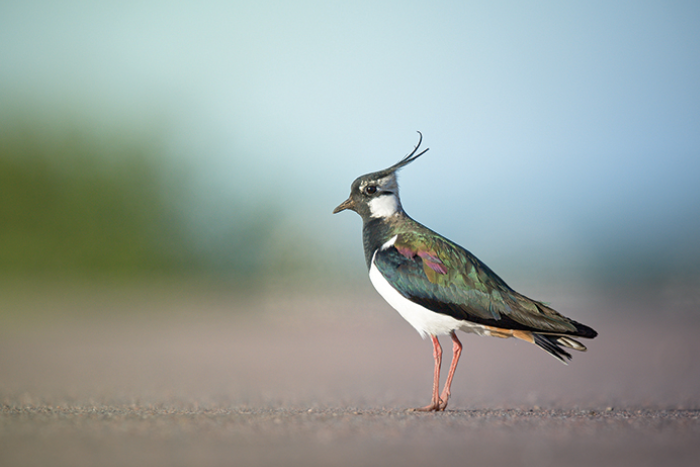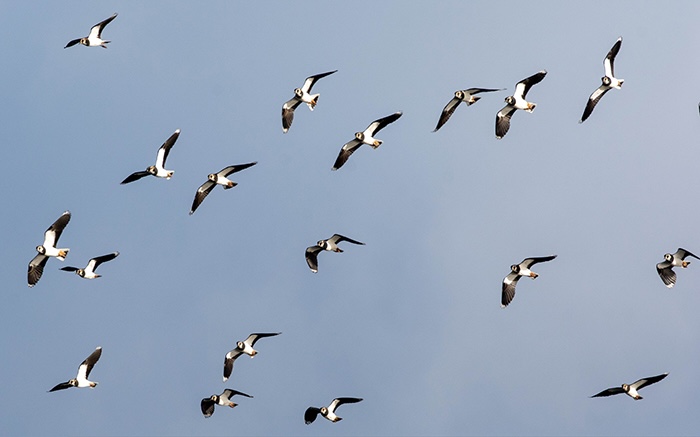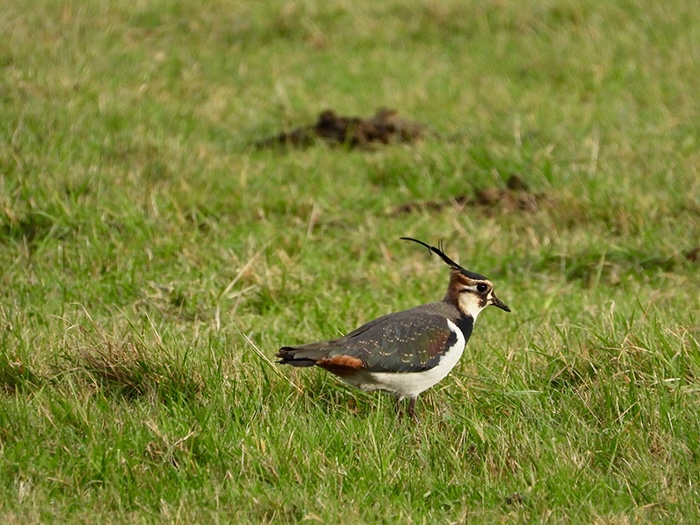
Lincolnshire Lapwings
Rachel Shaw
Lincolnshire Wildlife Trust
I pushed my hands further into my coat pockets in a vain attempt to retain some warmth but I wasn’t bothered about the cold as above my head was a flock of lapwings.
They twisted and turned on their broad, rounded wings. The low winter sun caught the white of their underwings creating a flickering of bright white then black. They kept coming, lifting up over a hedgerow and flying out across the mudflats of The Wash. I had no idea how many there are, I didn’t think to count them. In the moment of seeing them, all other thoughts left my mind.
For me, lapwings are a quintessential part of the Lincolnshire landscape. I’ve seen flocks of them in flight and flocks alighted in fields. Winter is a good time of year to see lapwings. Our resident birds are joined by birds from continental Europe where the weather is colder and harsher.
In the spring and summer, the wintering flocks disperse. Those that stay in Lincolnshire, nest on the ground in fields and marshes. But the places that are suitable for them declined as agricultural practices changed. The result was a severe decline in numbers of nesting lapwings across the UK. National surveys carried out in England and Wales showed a 49% population decline between 1987 and 1998.
When the Lincolnshire Wildlife Trust was founded 75 years ago, to protect sites like Gibraltar Point as nature reserves, what would happen to populations of nesting lapwings as agriculture changed couldn’t have been known. In the memoir of the late Ted Smith, who was one of the Trust’s most influential founding members, he recalls the time during the Second World War when, with police permit, he was able to watch autumn migrants along the coast at Huttoft and Anderby. He describes the tract of flat country immediately inland from the sea as having “nesting lapwings in nearly every field and vast flocks of them with golden plovers in winter.”
These birds must have made an impact on Ted as two lapwings in flight were chosen as the Trust’s logo and our magazine was, and still is, called Lapwings. When Ted and his wife Mary bought their home in Willoughby on the edge of the Lincolnshire Wolds, lapwings still nested in the field behind. They named the house Pyewipes.
Pyewipe is an old name for lapwings. The name will, of course, be familiar to many in Lincoln from the Pyewipe Inn by the Fossdyke. I’ve seen a field full of lapwings not far from the Pyewipe Inn. They were hunkered down, all facing the same way into the cold wintery wind, and camouflaged against the dark soil of a newly ploughed field. As well as the Pyewipe Inn, there are also Pyewipe Farms in Lincolnshire. These names emphasise the place of lapwings in the landscape of Lincolnshire.
There is hope for birds like lapwings. Their particular requirements for food and habitat, especially when nesting, are now well understood. When the Wildlife Trust bought fields at Anderby, lapwings were no longer nesting there. But by changing how the fields are managed and keeping water on the site rather than draining it all away, lapwings have returned and successfully raised their chicks.
In a few months, lapwings will be preparing to nest again. They’ll be making acrobatic display flights over their nesting sites. Slowing climbing high into the sky, then suddenly turning and tumbling back earthwards seeming like they’ll crash land, then rising again. All whilst making a drawn-out “pee-wit” call. I’ll be listening for them across Lincolnshire this spring.


